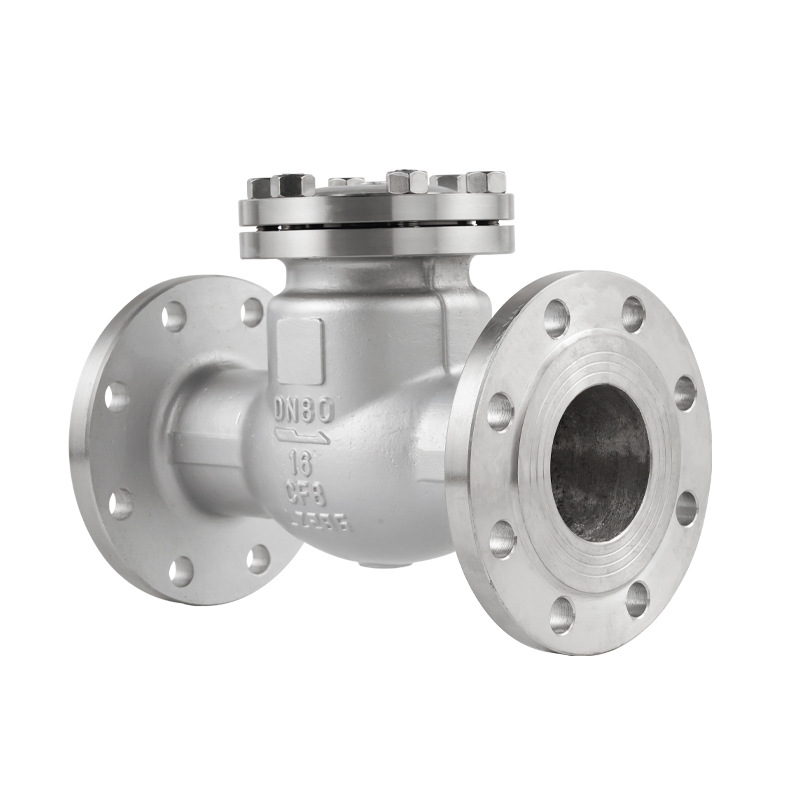يتضمن اختيار صمام الفحص المناسب المصنوع من الفولاذ المقاوم للصدأ فهم تطبيقك واختيار النوع المناسب والنظر في جودة المواد.
في هذه المقالة، نناقش بعض العوامل الإضافية التي يجب مراعاتها عند اختيار صمام عدم الرجوع المثالي المصنوع من الفولاذ المقاوم للصدأ.
من خلال دراسة هذه العوامل بعناية، يمكنك التأكد من أن صمام الفحص يلبي الاحتياجات المحددة لنظامك من أجل تشغيل موثوق وفعال.
ضع في اعتبارك الغرض المحدد لصمام الفحص في نظامك. سواء كان الأمر يتعلق بمنع التدفق العكسي في أنظمة المياه، أو التحكم في السوائل في العمليات الصناعية، أو التطبيقات الأخرى، فإن فهم احتياجاتك أمر بالغ الأهمية.
حدد نوع صمام الفحص المناسب لتطبيقك. تشمل الأنواع الشائعة صمامات فحص التأرجح المصنوعة من الفولاذ المقاوم للصدأ، وصمامات فحص الرفع، وصمامات فحص اللوح المزدوج. كل نوع له مزاياه بناءً على ظروف ومتطلبات التدفق.
اختر صمامات الفحص المعدنية، وخاصة المواد المصنوعة من الفولاذ المقاوم للصدأ، لضمان المتانة ومقاومة التآكل. ضع في اعتبارك الدرجة المحددة من الفولاذ المقاوم للصدأ، مثل الفولاذ المقاوم للصدأ 316، لتعزيز المقاومة للبيئات القاسية والسوائل المسببة للتآكل.
اختر صمام فحص بالحجم المناسب وسعة التدفق لتتناسب مع متطلبات النظام الخاص بك. ضع في اعتبارك عوامل مثل قطر الأنبوب ومعدل التدفق المتوقع لضمان الأداء الأمثل.
تحقق من معدل ضغط الصمام للتأكد من قدرته على تحمل ظروف الضغط في نظامك. حدد صمامًا بتصنيف يتجاوز الحد الأقصى لضغط التشغيل لنظامك.
ضع في اعتبارك موضع تركيب صمام الفحص. تم تصميم بعض الصمامات للتركيب الأفقي، بينما يعمل البعض الآخر بشكل جيد في الوضع الرأسي. اختر الصمام الذي يناسب تخطيط النظام الخاص بك.
تحقق من نوع التوصيل النهائي للصمام، سواء كان ملولبًا أو ذو حواف أو ملحومًا بالمقبس. تأكد من التوافق مع نظام الأنابيب الموجود لديك لسهولة التركيب.
ابحث عن صمامات الفحص التي تلبي معايير وشهادات الصناعة. وهذا يضمن أن الصمام يتوافق مع متطلبات الجودة والسلامة، مما يوفر راحة البال للتشغيل الموثوق.
تقييم سهولة الصيانة. اختر صمام فحص ذو بنية بسيطة ومكونات يمكن الوصول إليها لسهولة الفحص والإصلاح، إذا لزم الأمر.
ضع في اعتبارك التكلفة الأولية والتكاليف طويلة المدى المرتبطة بالصمام. في حين أن الصمامات المصنوعة من الفولاذ المقاوم للصدأ عالية الجودة قد تكون لها تكلفة أولية أعلى، إلا أنها غالبًا ما توفر متانة أفضل ونفقات صيانة أقل بمرور الوقت.
